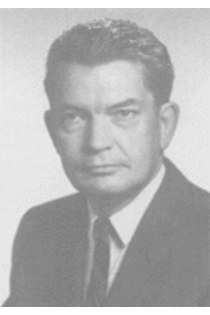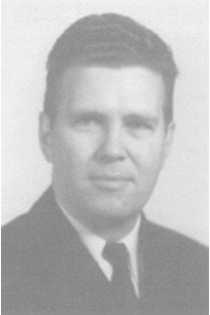In the first few years after the end of World War II, there was little change in the graduate program. The first postwar doctorates conferred were to candidates whose work had been interrupted and who were in residence only briefly after returning. Meanwhile, Basoco, in filling positions created primarily to cope with the increasing undergraduate enrollment, made some significant appointments.
Lloyd Jackson, who, like Leavitt, was an alumnus, returned in 1950 after finishing his doctoral studies at the University of California, Los Angeles. That same year, Dr. Hugo Ribeiro, who had been on a visiting appointment at the University of California, Berkeley, was appointed as Associate Professor.
In the next decade, while the younger faculty were establishing themselves, Ribeiro pushed to get a reorganization of the graduate program. As a student in his homeland, Portugal, he had been involved in activities deemed revolutionary by the government, and as a result, he was for a number of years prohibited from holding any position or from leaving the country. During those years, he studied mathematics, and finally when the government relented, he was allowed to go to Switzerland where he continued his studies and was granted a Doctor of Science degree. Ribeiro, with his "revolutionary" zeal, hastened the process toward modernizing the program and modifying it to reflect the interests and training of the younger faculty.
You know how you can avoid stepping in this stuff? Walk on your hands.
submitted by George Seifert
In 1954, Leavitt succeeded Basoco as Chairman. Only Basoco, Camp, Collins and Doole remained from the pre-war faculty, and the graduate program became almost entirely the responsibility of the younger faculty. There was a good balance between the research and teaching responsibilities. It was agreed that faculty would participate in teaching courses on both the upper and lower levels regularly and that advanced graduate courses would be assigned by specialties. The forthcoming move to the lecture-recitation mode of teaching introductory mathematics classes with the resultant drop in contact hours made it certain that teaching demands could be adequately met without disadvantaging research programs.
The period from the mid-fifties to the late sixties was perhaps the most volatile for the graduate mathematics program. Opportunities for faculty with recognized research ability and for students with the potential to develop into research mathematicians were plentiful. As a result, much movements especially among young mathematicians, occurred; and there was intensive recruiting of capable graduate students.
In connection with this, the support of Dr. Sigurd Mundhjeld, who completed his doctoral studies under Basoco and was one of the two whose programs had been war-interrupted, must be noted.Mundhjeld, as Chairman of the Mathematics Department of Concordia College, Minnesota, warmly recommended the program at Nebraska to students at Concordia. Over a period of several years, some of UNL's top graduate students came from Concordia. During the sixties and well into the seventies, the graduate program and the concomitant research activities of the Department flourished because of the efforts of Mundhjeld and rapport with regional undergraduate colleges.
In the mid-seventies, however, economic conditions and other deleterious factors caused a sharp drop in the graduate enrollment in mathematics, a drop shared nationwide; this forced some retrenchment in the advanced graduate program. Unfortunately, this drop was accompanied by a steady demand for mathematics and statistics courses throughout the seventies and into the eighties. The economic condition of the University precluded any growth in resources. In spite of these difficulties, research activity continued, and by the late eighties interest in graduate work in mathematics had rebounded. The research pattern within the Department, envisioned by Ellery Davis, is firmly established. Such activity is now a recognized quality which has enhanced and will continue to enhance the reputation of the Department.

Lloyd K. Jackson
1950-1984

William G.Leavitt
1947-1986
Chair: 1954-59, 60-64